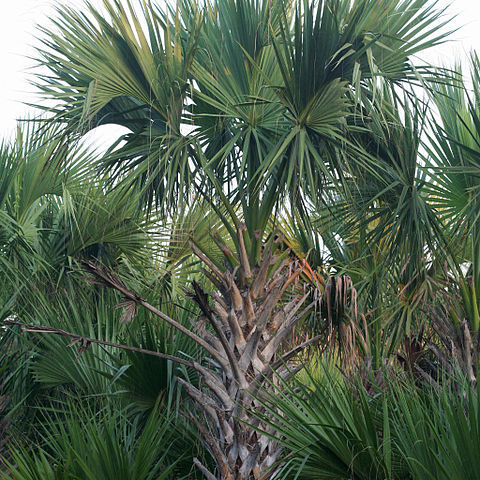Stems aerial, 20--35 cm diam. Leaves 10--30, strongly costapalmate; hastula acute to acuminate, 9.5--15.5 cm; segments filiferous, 80--145 ´ 3.2--5.3 cm; apices bifid2-cleft. Inflorescences with 3 orders of branching (not counting main inflorescence axis), arching, about ± as long as leaves. Flowers 3.7--6.5 mm. Fruits black, oblate-spheroid, length 13.8--17 mm, diam. diam. 14.8--19.3 mm. diam.. Seeds 5.4--7.4 mm, diam. 8.6--13.3 mm diam. 2n = 36.


